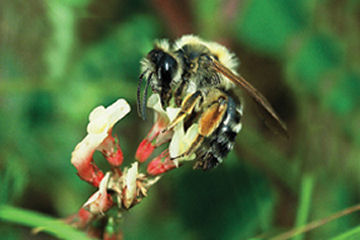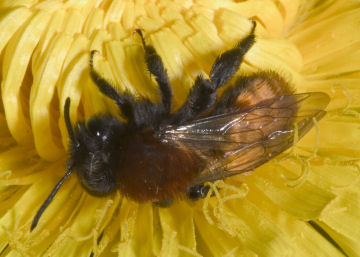Bee Concerned: Big study—Selective pollinators are declining
A million records from insect-spotting hobbyists in Europe contain the broadest evidence so far of a decline among some of the region’s pollinators and the wild plants that need them, says an international research team.


The new study shows that since the 1980s, bees have dwindled in diversity in Britain and the Netherlands, as have wild plants that are at the mercy of insects that transport pollen, says Koos Biesmeijer of the University of Leeds in England. The team’s unusual study strongly supports the much-discussed worry that loss of pollinating insects will undermine local plant populations, perhaps eventually shrinking food supplies, Biesmeijer and 11 other authors contend in the July 21 Science.
“This is the kind of data we need,” says pollination ecologist Jaboury Ghazoul of the Swiss Federal Institute of Technology in Zurich. But he wants more data before declaring a global pollination crisis, he says.
Biologists have worried for years that rising pesticide use and diminishing insect-friendly habitat are reducing pollinator populations. Most of the evidence, however, had come from declines in U.S. honeybees and European bumblebees.
Ghazoul asks, What about other species and other places? And are other insects picking up the slack? “We need to be very careful to avoid scaremongering,” he says.
Britain and the Netherlands are among the few places with long-term data on insect diversity, thanks to hobbyist groups that include Britain’s Bees, Wasps and Ants Recording Society. The European Union, as part of its program to assess risks to biodiversity, funded the international team’s analysis of those records.
“This is the largest study to date,” says Biesmeijer.
The researchers divided the two countries into 100-square-kilometer blocks and then tabulated local sightings of several hundred wild-bee species and another group of flying pollinators called hoverflies.
Bee-species diversity declined, on average, in 60 percent of the blocks, increased in a few percent, and held steady in the rest, the researchers report. The waning species tended to be bees with narrow ranges or finicky tastes in plants. Hoverflies didn’t show any trend in Britain but have increased in diversity in the Netherlands.
To see what happened to the plants that the various insects service, the researchers checked extensive government records of wild-plant ranges. They omitted the majority of plants, which have several strategies for pollination. Among plants that rely primarily on insects or other animals for pollination, 70 percent had declined in range since 1980. During the same period, the wind- or water-pollinated species and those that pollinate themselves fared much better.
Ghazoul suggests that a weedy lifestyle, rather than plants’ pollination tactics, could account for the success of the wind-pollinated plants. He notes that many of them thrive in disturbed landscapes.
Biesmeijer cautions that the data don’t specify cause and effect, but he remains worried by declines in bee diversity. The once-rich variety of pollinators that visit select groups of flowers or have other specialized habits is giving way to a far smaller number of generalists.
The international team is currently checking for any impact of pollinator decline on European crop plants, Biesmeijer says.